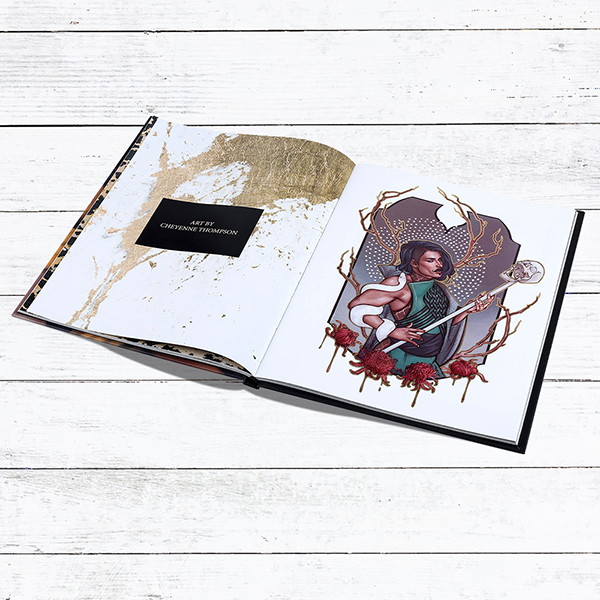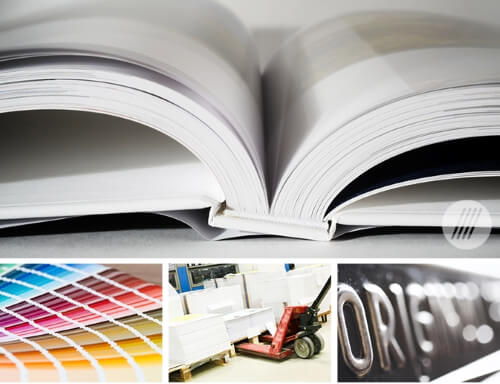How DPI Affects the Final Quality of Your art book
Wiki Article
Discover the Important Overview to Art Book Printing for Aspiring Artists and Publishers
As a hopeful artist or publisher, understanding the subtleties of art book printing is vital to bringing your vision to life. What are the vital aspects you should focus on to create a magnificent art book that really represents your job?Understanding Various Sorts Of Art Books
When you plunge right into the globe of art publications, you'll quickly uncover that they can be found in different kinds, each tailored to various creative expressions and audiences. Coffee table publications frequently display magnificent visuals, ideal for laid-back surfing, while essays dive deep into a specific artist's job, giving context and insights. If you're interested in certain art movements, exhibit brochures offer in-depth documents of shows, featuring essays and critiques.For instructional purposes, art guidebooks and technique books direct you with different mediums and styles, making them essential for aspiring artists. Limited edition or musician books obscure the lines in between art and literature, frequently incorporating special design components or handcrafted attributes. Recognizing these types helps you determine what resonates with you and what could best fit your audience. Each format serves its objective, and recognizing their differences can enhance your art book trip.
Picking the Right Paper and Products
Choosing the ideal paper and materials can considerably impact the total top quality and feel of your art book. For vivid colors and detailed details, choose for a glossy surface or a heavyweight matte paper that enhances aesthetic deepness.Believe regarding the weight of the paper, as well. Thicker choices frequently offer an even more professional look, while lighter papers can lower printing prices. Don't forget the binding products; a sturdy cover can secure your web pages and add to the book's aesthetic.
Ultimately, consider sustainability. Green options are getting appeal and can show your worths as an artist. By thoroughly choosing your paper and materials, you'll ensure that your art book not just looks fantastic however likewise feels special in the hands of your viewers.

Choosing the most effective Printing Strategies
When it comes to printing your art book, selecting between offset and electronic printing can considerably influence your final product. You'll also intend to consider just how paper top quality impacts the overall look of your art work. Let's explore these essential printing strategies to find the ideal fit for your project.Balanced Out vs. Digital Printing
While both balanced out and digital printing have their benefits, selecting the ideal technique for your art book can considerably influence the last item. Balanced out printing uses high-grade pictures and vivid shades, making it suitable for larger print runs. If you're aiming to create hundreds or hundreds of duplicates, balance out will certainly provide you regular outcomes and lower per-unit prices. On the various other hand, electronic printing stands out for smaller amounts and quicker turn-around times. It enables for very easy customization, enabling you to print distinct duplicates without extra configuration prices. Consider your budget, timeline, and the volume of your job. Inevitably, your option should straighten with your imaginative vision and circulation method, ensuring that your art book mirrors the quality you prefer.Paper Top Quality Factors To Consider
Picking the appropriate paper top quality can considerably enhance the aesthetic appeal and tactile experience of your art book. For prints, a shiny surface can make pictures pop, while a matte coating offers a softer, a lot more refined appearance.Next, think of the sustainability of your option. Eco-friendly choices are ending up being progressively prominent and can attract environmentally-conscious readers. Finally, request examples to see how different documents work with your artwork, guaranteeing the final item mirrors your vision completely.
Making Certain Shade Precision in Your Prints
To accomplish sensational prints, you require to focus on shade precision from the begin. You'll wish to make use of shade calibration strategies to verify your monitor and printer remain in sync. In addition, proofing your job prior to the final print run can aid catch any kind of inconsistencies, guaranteeing your art looks equally as you pictured.Shade Calibration Techniques
Ensuring color accuracy in your prints begins with reliable shade calibration strategies that aid keep uniformity between your electronic photos and final published items. Calibrate your screen making use of hardware calibration devices to attain the best shade representation. This confirms that what you see on-screen suits what obtains published. Next, select a shade account fit for your printing procedure, like CMYK for print materials. On a regular basis inspect your printer's settings and preserve it to avoid shade shifts. It's additionally important to make use of top quality paper that complements your inks, as different surfaces can greatly impact color outcome. By continually using these methods, you'll improve the overall high quality of your art prints and far better communicate your creative vision.Proofing for Accuracy
While you might believe your electronic images are prepared for print, proofing is important for attaining shade accuracy. Prior to committing to a full print run, always request a proof from your printer.If changes are required, communicate plainly with your printer concerning your preferred check my source outcomes. Do not wait to request numerous proofs if required; it's worth the financial investment to obtain it. Eventually, thorough proofing guarantees that your artwork is represented as you pictured it, maintaining your artistic stability throughout the printing process.

Designing Layouts That Enhance Your Artwork
When you make layouts for your art book, it's important to contemplate exactly how each component engages with your artwork. Go for a balance in between visuals and text, making sure neither overshadows the other. Use white room strategically; it offers your artwork room to take a breath and draws interest to its details.Consider the flow of your book. Arrange images in a way that guides the visitor's eye, developing a narrative or thematic progression. art book. Vary the dimensions and alignments of your art work to maintain the design vibrant and fascinating
Select font styles that complement your art work without sidetracking from it. Maintain message succinct and appropriate, offering context or insight that boosts the visitor's experience.
Lastly, examination various formats. Publish examples to see how the designs convert on paper, and change as needed. By thoughtfully designing your formats, you'll develop a visually appealing art book that resonates with your target market.
Binding Options for a Professional Finish
Choosing the right binding alternative can greatly influence the general presentation of your art book. You'll desire to think about both aesthetic appeals and durability when making your selection. Popular options consist of best binding, which provides a smooth appearance and is perfect for thicker publications; saddle sewing, ideal for smaller sized brochures; and spiral binding, which enables pages to lay flat for very easy watching.If you're going for a premium feeling, instance binding is an outstanding choice, supplying a strong cover and a specialist look (art book). Do not ignore the cover material; choices like cloth, natural leather, or a shiny finish can elevate your book's allure
Whatever alternative you select, make certain it complements your art work and improves the viewers's experience. Take your time to consider the benefits and drawbacks of each method, so your end product mirrors the top quality of your innovative vision.
Preparing Your Documents for Publish Preparedness
click resources To ensure your art book is print-ready, you'll require to pay close interest to submit preparation. Start by setting your record dimension to match your desired print measurements.Consider producing an evidence to assess before the final print run. Adhering to these steps will certainly aid you attain a sleek, specialist art book.
Often Asked Questions
What Is the Average Price of Publishing an Art Book?
The average cost of printing an art book varies, however you can expect to pay anywhere from $5 to $20 per duplicate, depending upon variables like dimension, paper high quality, and printing volume.Just How Can I Locate a Reliable Printing Firm?
To locate a trustworthy printing business, start by looking into on-line why not try these out testimonials and asking other musicians for suggestions. Compare quotes, examine portfolios, and connect your demands plainly to guarantee they recognize your vision and top quality assumptions.
What Is the Normal Turn-around Time for Printing?
The common turnaround time for printing varies however typically ranges from one to four weeks. Aspects like job intricacy and volume can affect this. Constantly verify with your chosen printer for certain timelines and assumptions.Can I Publish My Art Book in Limited Quantities?
Yes, you can absolutely print your art book in restricted quantities. Many printing companies use short-run alternatives, allowing you to produce simply the number you need, making it much easier to take care of expenses and stock.What Legal Factors To Consider Should I Know for My Art Book?
You must consider copyright, licensing contracts, and version releases when producing your art book. Make sure you can use all images and text, shielding yourself from potential legal concerns later on.Report this wiki page